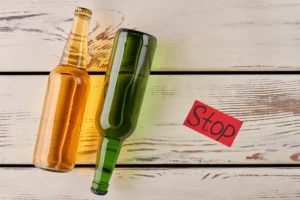
To sustain the high, users will often take cocaine repeatedly in a short period. Chronic use leads to a physical tolerance to the drug, which forces the user to take increasingly higher doses to continue or produce the same high, swiftly leading to physical and psychological addiction. Cocaine is one of the most widely abused stimulants in the United States and is the cause of thousands of overdoses and physical complications leading to emergency room visits each year. Cocaine is one of the oldest known drugs and has been abused around the world for decades.
Advancing reduction of drug use as an endpoint in addiction treatment trials

Developing a relapse prevention plan that will help in high-risk situations can be very effective in long-term planning. Rehab consists of a combination of therapy, counseling, group meetings and other programs that work to address the underlying causes of addiction and create a plan for recovery. Learning to identify triggers and coping mechanisms to deal with those triggers is another important aspect of rehab. Changing the behaviors that led to addiction can be challenging but also very rewarding.
Addiction Recovery Groups: Empowering Individuals on the Path to Sobriety
- For many people trying to recover from a substance use disorder, perhaps for the majority, abstinence may be the most appropriate treatment objective.
- From augmented reality classrooms and clinical simulations to coursework that includes experiential global travel to clinical placements in top notch facilities, a Penn Nursing education prepares our graduates to lead.
- Inpatient rehab is also a safe environment for supervising cocaine detox and withdrawal.
- It’s not a one-size-fits-all process – each person’s experience is unique, influenced by factors like the severity of addiction and overall health.
- This might involve nutritional counseling, exercise programs, or even art therapy.
Penn Nursing’s rigorous academic curricula are taught by world renowned experts, ensuring that students at every level receive an exceptional Ivy League education. From augmented reality classrooms and clinical simulations to coursework that includes experiential global travel to clinical placements in top notch facilities, a Penn Nursing education prepares our graduates to lead. Penn Nursing students are bold and unafraid, ready to embrace any challenge that comes their way. Whether you are exploring a career in nursing or interested in advancing your nursing career, a Penn Nursing education will help you meet your goals and become an innovative leader, prepared to change the face of health and wellness. A world-class city filled with art and culture and an incredible campus that offers cutting edge resources–that’s what students receive at Penn Nursing. Penn Nursing and the wider university offer something for everyone, as well as a lifelong community.
- Behavioral treatment includes psychotherapy and other psychosocial interventions.
- Expecting complete abstinence may be unrealistic in some cases and can even be harmful.
- Disulfiram works by blocking the enzyme responsible for metabolizing cocaine in the body, which leads to an unpleasant reaction if the individual uses cocaine.
- Cocaine addiction accounts for roughly 6% of all drug rehab admissions in the United States.
- During the assessment, various factors will be considered to determine the severity of your addiction.
Find a Rehab Center

Sometimes an intense effect is achieved by using more powerful forms of the drug, such as crack, or using other drugs in addition to cocaine. Imagine a future where the grip of cocaine use disorder can be loosened, where cravings fade, and the risk of relapse diminishes. A new study published in Science Advances, led by Penn Nursing’s Heath Schmidt, PhD, cocaine addiction treatment brings this vision closer to reality.
Life After Treatment: How to Maintain Recovery
It helps individuals identify and change negative thought patterns that lead to drug use. Imagine it as a mental toolbox, filled with strategies to cope with cravings and avoid relapse. CBT can be particularly effective for those dealing with cocaine addiction, as it addresses the underlying thought patterns that fuel the addiction. If you or someone you care about is struggling with cocaine addiction, finding and entering a treatment facility is the first step toward recovery and greater drug addiction health and well-being. The best way to check your insurance coverage is to call your provider or verify your insurance now.

Cancer research, long protected, feels ‘devastating’ effects under Trump
- It provides you with the necessary tools and support to overcome your addiction and build a healthy, fulfilling life.
- By recognizing the signs of addiction, those who are addicted can identify the problem, seek professional treatment, and experience lasting recovery.
- Most treatment facilities establish an aftercare plan to help you maintain lifelong sobriety.
- Stress is a common trigger for drug use, so learning healthy ways to manage stress is crucial for maintaining sobriety.
The assessment process is conducted by trained professionals who are knowledgeable and supportive, ensuring that you receive the best possible care. According to data from the Substance Abuse and Mental Health Services Administration, of the more than 139,000 people admitted for treatment of cocaine use, about 43% had crack cocaine listed as one of the drugs they used. When snorted, smoked, or injected, cocaine induces intense feelings of euphoria. Over time, however, the body alters its own natural patterns in terms of production and reuptake of the neurotransmitters. Tolerance to the drug develops and more and more cocaine is needed to achieve the desired effect.

